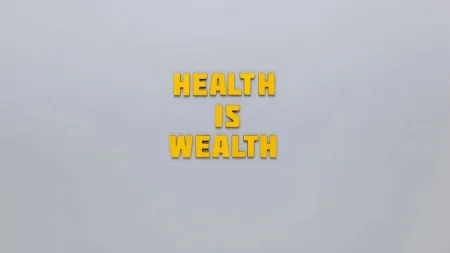Here’s some help on coping with overwhelming emotions like self harm
A few months ago, actor Imran Khan — who had taken a backseat from public life in 2015 — shared a post on Instagram with a trigger warning where he opened up about his own experience with self-harm. “There I was, poking and slicing away trying to feel ‘normal’, but somehow the edges of the words seemed less sharp… the tips less pointy. They weren’t drawing blood the way they used to. They just didn’t work anymore. And I think I know why,” he wrote.
In the same post, Khan admitted that he is in a much better place today. “We all have scars, old wounds that still ache. But love heals. Love is empowering and uplifting, and if you are fortunate enough to receive the kind of love that I have, I think it starts to fill in those scars,” he said.

The Jaane Tu Ya Jaane Na actor had disappeared from the spotlight for a few years after quitting his job as an actor. But, to his fans’ surprise, he made a comeback on social media in August last year and has also been spotted at several events and travelling around the country since.
View this post on Instagram
A post shared by Imran Khan (@imrankhan)
In recent years, there has been a growing recognition of the need for multifaceted approaches to address self-harm; and while giving and receiving love can definitely help, there are alternate strategies that can help one cope with overwhelming emotional distress. Self harm is a worrying and deeply personal issue that continues to affect many, but is rarely spoken about. Individuals use it as a coping mechanism when they feel that they have no other way out of a bad situation or cannot talk to anyone about it. They resort to getting some relief by inflicting pain upon themselves through cutting, burning, or other methods of self-injury.
Neha Cadabam, senior psychologist and executive director at Cadabams Hospitals shares, “While it’s commendable for public figures like Imran Khan to share their struggles with self-harm, it’s important to remember that self-harm experiences are unique. His story might resonate with some fans and offer a sense of shared experience, potentially reducing stigma.”
“Self-harm, though seemingly destructive, often serves as a way to cope with overwhelming emotional distress,” explains Cadabam.
Individuals who resort to self-harm might be struggling with intense emotions like anxiety, depression, anger, or feelings of emptiness. The physical pain inflicted through self-harm, she adds, can provide a temporary sense of relief from emotional turmoil. Additionally, self-harm can be a way to express emotional pain they might not be able to articulate verbally, or a desperate attempt to feel something when feeling emotionally numb.
Underlying psychological factors that may drive someone towards self-harm
According to Cadabam, many people, especially in India, lack awareness about mental health emergencies and available resources. “They might not recognise self-harm as a cry for help or a symptom of a deeper issue. Adding to it is the stigma surrounding mental health can prevent individuals from seeking professional help,” she explains.
The fear of judgment or being labeled “crazy” can be a significant barrier. As a result, several people resort to self-harm as a way to cope with their pain in silence. To be able to provide help, it is essential to learn about what physiological factors can drive one towards self harm.
Self harm, Cadabam suggests, can be triggered by various factors, including:
- Emotional dysregulation: Difficulty managing intense emotions like anger, sadness, anxiety, or loneliness. Self-harm offers a temporary release from these overwhelming feelings.
- Trauma: Past experiences of abuse, neglect, or violence can leave deep scars. Self-harm can be a way of expressing or numbing the emotional pain associated with those experiences.
- Low self-esteem: Feeling worthless or unlovable can lead to self-punishment through self-harm.
- Dissociation: Detachment from oneself can lead to self-harm as a way to feel something, even pain.
- Lack of healthy coping mechanisms: Individuals who haven’t developed healthy ways to manage stress or difficult emotions may resort to self-harm.
 In recent years, there has been a growing recognition of the need for multifaceted approaches to address self-harm (Source: Freepik)
In recent years, there has been a growing recognition of the need for multifaceted approaches to address self-harm (Source: Freepik)
Effective therapeutic approaches or techniques for individuals to develop healthier coping strategies
Several evidence-based therapies can help individuals develop healthier coping strategies. Cadabam lists them down as follows:
Cognitive-behavioural therapy (CBT)
CBT helps individuals identify negative thought patterns contributing to self-harm urges and develop healthier coping skills.
Dialectical behaviour therapy (DBT)
DBT focuses on emotional regulation, distress tolerance, interpersonal effectiveness, and mindfulness – crucial for managing emotions and developing healthier outlets.
Acceptance and commitment therapy (ACT)
ACT teaches individuals to accept difficult emotions without judgment and commit to living a meaningful life according to their values.
Art therapy
Art therapy allows for non-verbal expression of emotions and can be a safe space for exploration and healing.
Mindfulness techniques
Techniques like meditation and deep breathing can help individuals become more aware of their emotional state and learn to manage difficult emotions in a healthy way.
Journaling
Journaling allows individuals to express and explore their thoughts and feelings, promoting self-awareness and emotional processing.
Support groups
Connecting with others who understand self-harm can provide validation, reduce isolation, and offer encouragement on the journey to recovery.
Cadabam agrees that there’s still a lot of work that needs to be done to raise awareness about this problem. “Self-awareness is crucial for identifying triggers that lead to self-harm urges. Triggers can be situations, emotions, memories, or even people.”
By keeping a journal or practicing mindfulness, she says, individuals can learn to recognise their triggers and develop alternative coping mechanisms. When a trigger is identified, taking proactive steps like engaging in relaxation techniques, reaching out for support, or engaging in a healthy activity can help avoid self-harm.
Disclaimer: The copyright of this article belongs to the original author. Reposting this article is solely for the purpose of information dissemination and does not constitute any investment advice. If there is any infringement, please contact us immediately. We will make corrections or deletions as necessary. Thank you.





